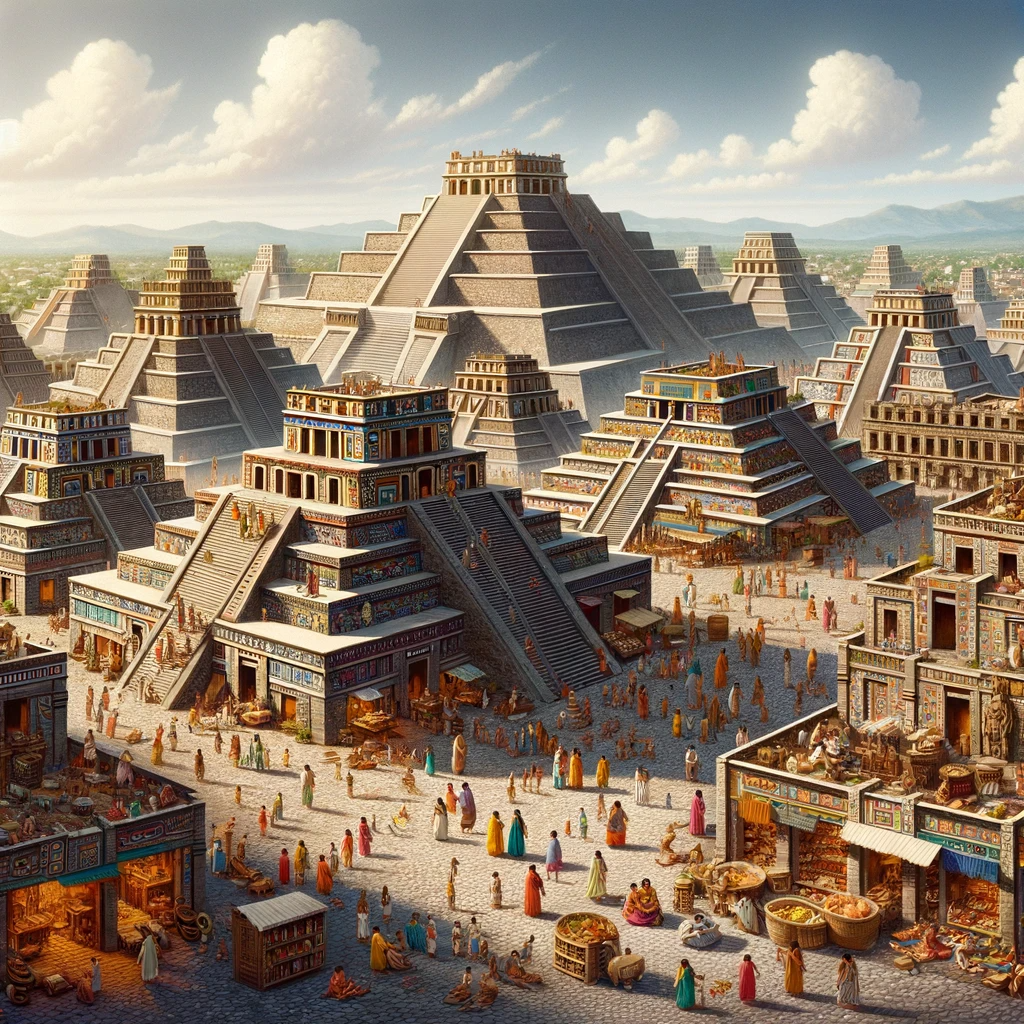
In the heart of the ancient Aztec Empire, Tlatelolco stood as a testament to the civilization's architectural prowess, economic strength, and cultural richness. Originally an independent city-state, Tlatelolco holds a unique place in Mesoamerican history, eventually becoming a part of the larger city of Tenochtitlán. This article delves into the history, significance, and legacy of Tlatelolco, offering insights into its role in the Aztec world.
The Rise of Tlatelolco
Tlatelolco, founded in the early 14th century, began as an independent altepetl (city-state) on a separate island in Lake Texcoco, near its sister city Tenochtitlán. These cities were part of a broader network of city-states that made up the Aztec civilization, known for their advanced social, political, and economic systems. The strategic location of Tlatelolco, with access to navigable waterways and fertile lands, contributed to its rise as a significant urban center.
Economic and Commercial Hub
Tlatelolco's most notable contribution to the Aztec Empire was its vibrant marketplace, which played a pivotal role in the Mesoamerican economy. This marketplace was not just a local trading hub but a center where goods from all over the empire and beyond were exchanged. Merchants, known as pochteca, traded in a wide variety of goods, including textiles, precious metals, cocoa beans, and exotic feathers. The marketplace was overseen by officials who maintained order and ensured fair trade practices.
Cultural and Religious Significance
Tlatelolco was also a center of religious and educational activities. The city housed several temples, the most prominent being the Templo Mayor, dedicated to the Aztec god of rain, Tlaloc, and the sun god, Huitzilopochtli. These temples were sites of important religious ceremonies and rituals that were integral to Aztec spiritual life. Additionally, Tlatelolco was home to one of the most esteemed Calmecac, an educational institution where children, especially those of nobility, received rigorous religious and military training.
Integration with Tenochtitlán
In the mid-15th century, Tlatelolco was absorbed by its neighboring city-state, Tenochtitlán, becoming part of a larger, more powerful entity. This unification was a turning point in the history of Tlatelolco, as it lost its independence but gained prominence within the growing Aztec Empire. Under the rule of Tenochtitlán, Tlatelolco continued to flourish as a commercial and religious center.
The Fall and Legacy
The Spanish conquest in the 16th century marked the decline of Tlatelolco, along with the rest of the Aztec Empire. The Battle of Tlatelolco in 1521 was one of the final stands of the Aztec warriors against the Spanish conquistadors. Today, the ruins of Tlatelolco stand in Mexico City, offering a glimpse into the past glory of the Aztec civilization.
Conclusion
Tlatelolco's history is a fascinating chapter in the story of the Aztec Empire. As a commercial hub, religious center, and eventually part of the powerful Tenochtitlán, it played a crucial role in shaping Mesoamerican history. The legacy of Tlatelolco endures, providing valuable insights into the complex and sophisticated world of the Aztecs.
The Rise of Tlatelolco
Tlatelolco, founded in the early 14th century, began as an independent altepetl (city-state) on a separate island in Lake Texcoco, near its sister city Tenochtitlán. These cities were part of a broader network of city-states that made up the Aztec civilization, known for their advanced social, political, and economic systems. The strategic location of Tlatelolco, with access to navigable waterways and fertile lands, contributed to its rise as a significant urban center.
Economic and Commercial Hub
Tlatelolco's most notable contribution to the Aztec Empire was its vibrant marketplace, which played a pivotal role in the Mesoamerican economy. This marketplace was not just a local trading hub but a center where goods from all over the empire and beyond were exchanged. Merchants, known as pochteca, traded in a wide variety of goods, including textiles, precious metals, cocoa beans, and exotic feathers. The marketplace was overseen by officials who maintained order and ensured fair trade practices.
Cultural and Religious Significance
Tlatelolco was also a center of religious and educational activities. The city housed several temples, the most prominent being the Templo Mayor, dedicated to the Aztec god of rain, Tlaloc, and the sun god, Huitzilopochtli. These temples were sites of important religious ceremonies and rituals that were integral to Aztec spiritual life. Additionally, Tlatelolco was home to one of the most esteemed Calmecac, an educational institution where children, especially those of nobility, received rigorous religious and military training.
Integration with Tenochtitlán
In the mid-15th century, Tlatelolco was absorbed by its neighboring city-state, Tenochtitlán, becoming part of a larger, more powerful entity. This unification was a turning point in the history of Tlatelolco, as it lost its independence but gained prominence within the growing Aztec Empire. Under the rule of Tenochtitlán, Tlatelolco continued to flourish as a commercial and religious center.
The Fall and Legacy
The Spanish conquest in the 16th century marked the decline of Tlatelolco, along with the rest of the Aztec Empire. The Battle of Tlatelolco in 1521 was one of the final stands of the Aztec warriors against the Spanish conquistadors. Today, the ruins of Tlatelolco stand in Mexico City, offering a glimpse into the past glory of the Aztec civilization.
Conclusion
Tlatelolco's history is a fascinating chapter in the story of the Aztec Empire. As a commercial hub, religious center, and eventually part of the powerful Tenochtitlán, it played a crucial role in shaping Mesoamerican history. The legacy of Tlatelolco endures, providing valuable insights into the complex and sophisticated world of the Aztecs.